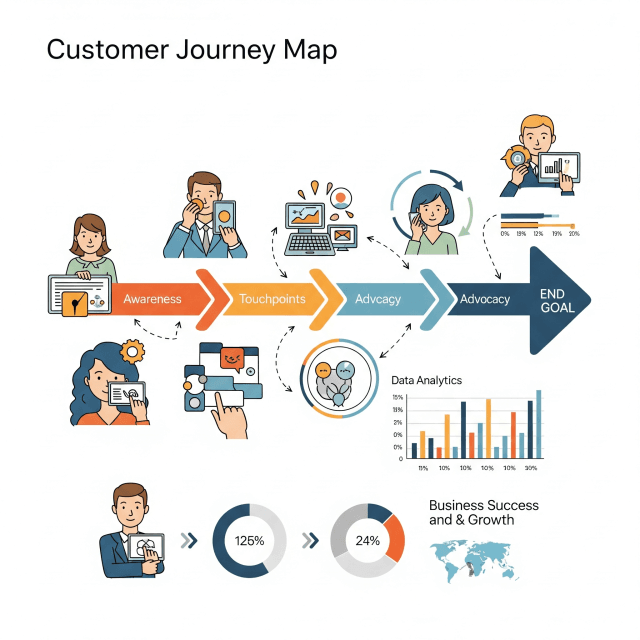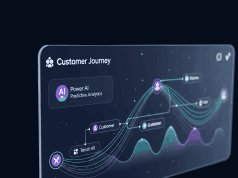In today’s competitive business landscape, understanding the customer journey is more critical than ever. Organizations leverage data not only to understand their customers but also to create personalized experiences that drive loyalty and revenue. Customer journey analytics, a method of mapping and analyzing the various touchpoints a customer experiences, enables businesses to translate insights into actionable strategies that foster success.
Understanding Customer Journey Analytics
Customer journey analytics involves the collection and analysis of data from multiple channels to visualize the complete customer experience. It encompasses every interaction a customer has with a brand, from initial awareness to post-purchase engagement. By employing various tools and methodologies—such as path analysis, sentiment analysis, and cross-channel tracking—businesses can gain a holistic view of customer behaviors and preferences.
Key Components of Customer Journey Analytics
- Data Collection: Utilizing tools like web analytics, CRM systems, and social media insights to gather comprehensive data on customer interactions.
- Touchpoint Analysis: Identifying and analyzing key touchpoints—both online and offline—where customers interact with the brand.
- Sentiment Analysis: Understanding customer feelings and feedback at different journey stages to gauge satisfaction and pain points.
- Path Analysis: Mapping the typical pathways customers take, highlighting factors that drive conversions or losses in the sales funnel.
- Segmentation: Categorizing customers based on behaviors, preferences, and demographics to enable targeted strategies.
From Insights to Action
The real power of customer journey analytics lies not just in understanding customer behavior but in the ability to act on these insights. Successful organizations turn data into actionable steps that enhance customer experience and drive business success. Here’s how:
1. Personalization
With insights from customer journey analytics, businesses can personalize their offerings. Understanding what customers prefer enables companies to tailor messages, products, and services to individual needs. For instance, e-commerce platforms can recommend products based on past purchases, while service industries can customize communications for different segments.
2. Proactive Problem Solving
By identifying pain points in the customer journey, companies can proactively address issues before they escalate. For instance, if analytics reveal that customers frequently abandon their carts at a specific stage, businesses can investigate and optimize that part of the journey to reduce friction.
3. Strategic Marketing Decisions
Customer journey analytics guide marketing strategies by highlighting which channels are most effective at different stages. Businesses can allocate resources more efficiently, investing in channels and tactics that yield the highest return on investment (ROI). Understanding where to engage customers also allows for targeted campaigns that resonate more deeply.
4. Enhanced Customer Retention
Customer journey analytics not only assist in acquiring new customers but also play a crucial role in retention. By understanding the journey of loyal customers, businesses can replicate successful strategies and continuously engage customers post-purchase. Loyalty programs, personalized follow-ups, and consistent communications are all driven by these insights.
5. Data-Driven Innovation
Analyzing customer journeys can uncover gaps in products or services that customers desire. This can lead to innovation as companies recognize opportunities to improve their offerings based on real customer feedback and behavior. For instance, if numerous customers indicate a need for a specific feature, businesses can prioritize its development.
Challenges in Implementing Customer Journey Analytics
While the benefits are substantial, businesses face challenges in implementing customer journey analytics effectively. These include:
- Data Silos: Fragmented systems can lead to incomplete data, making it difficult to gain a complete view of the customer experience.
- Complexity of Data: Analyzing vast amounts of data requires sophisticated tools and skills, which may be a barrier for some organizations.
- Changing Customer Expectations: Customer preferences are constantly evolving, necessitating ongoing analysis and adjustment.
Conclusion
Customer journey analytics is not merely a tool for understanding customers; it is a strategic asset that drives business success. By transforming insights into actions—be it through personalization, proactive problem-solving, or targeted marketing—organizations can foster deeper connections with their customers. In a world where customer loyalty is increasingly hard to earn, mastering the customer journey is key to thriving in today’s fast-paced market.
Investing in customer journey analytics is not just an operational shift; it’s an opportunity to redefine how businesses engage, serve, and retain their customers in a meaningful way.








